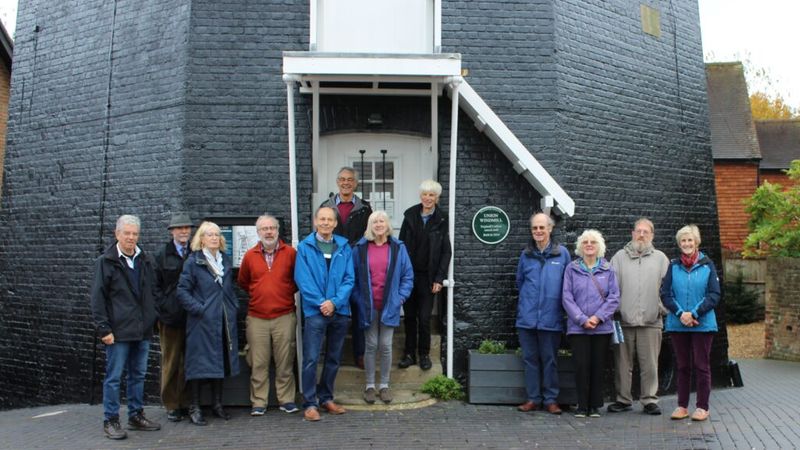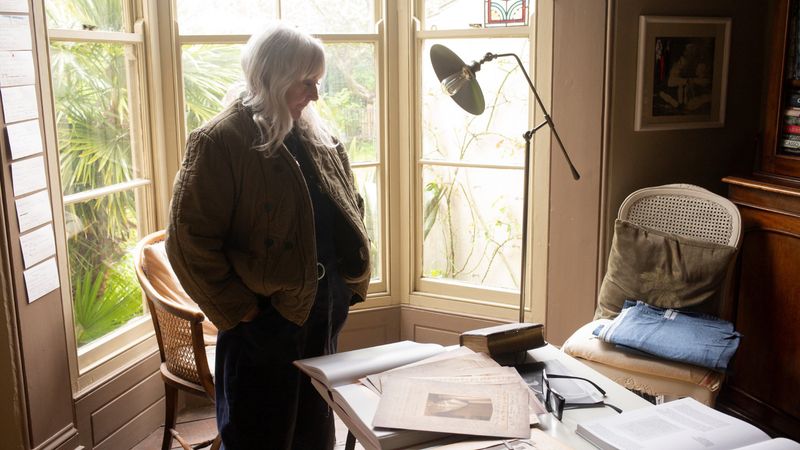This magnificent working windmill was built in 1814 and has been in the care of the county council since 1958. The mill is regularly open to the public thanks to volunteers from the Cranbrook Windmill Association.
Cranbrook windmill is the tallest 'smock mill' in Britain, standing 72ft (22m) to the top of the cap roof, with seven floors. This type of windmill used to be very common in Kent and the term 'smock mill' relates to the white painted wooden tower of the mill which is said to look like the traditional garment once worn in rural areas.
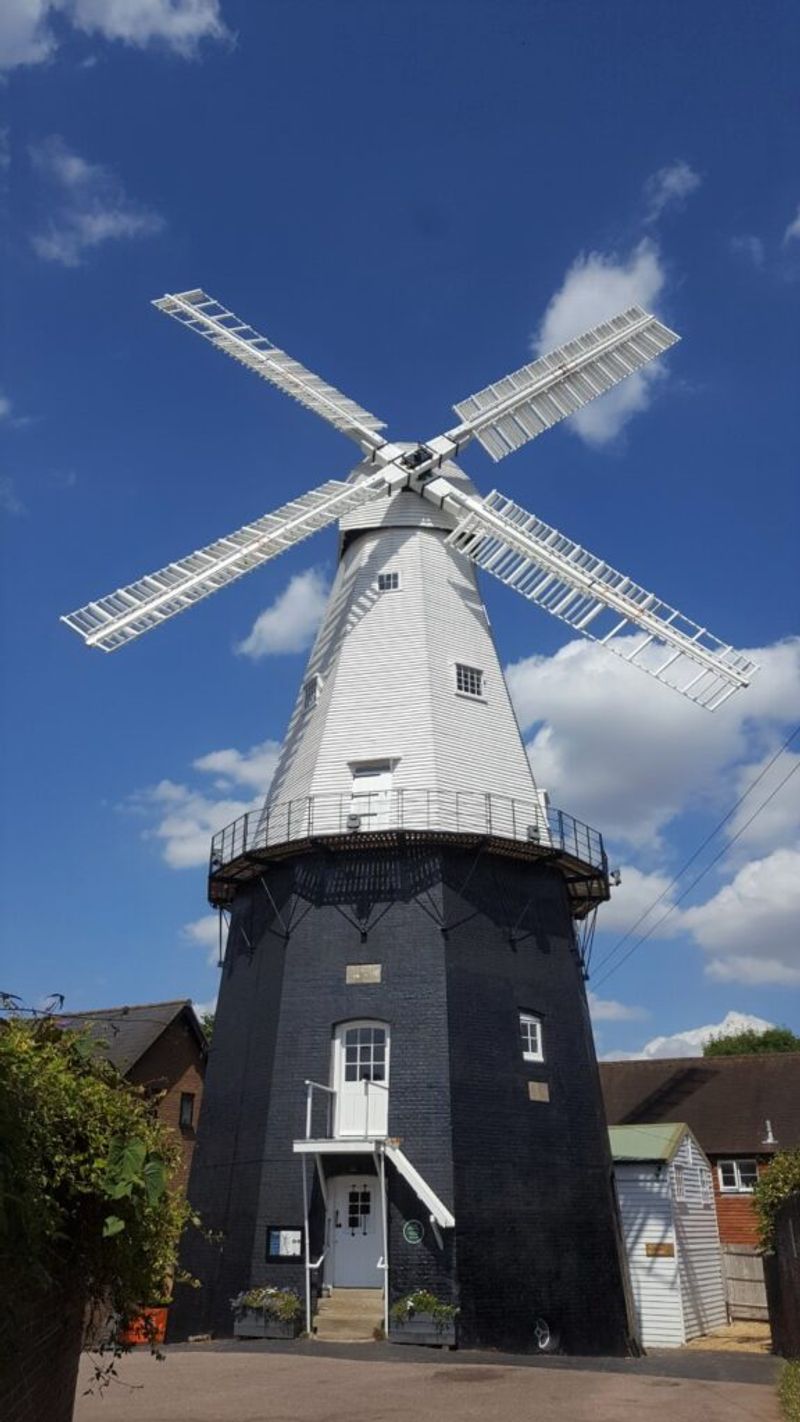
Image of Cranbrook Windmill
Cranbrook windmill is the tallest 'smock mill' in Britain, standing 72ft (22m) to the top of the cap roof, with seven floors. This type of windmill used to be very common in Kent and the term 'smock mill' relates to the white painted wooden tower of the mill which is said to look like the traditional garment once worn in rural areas.
Each of the four sails, known south of the Thames as 'sweeps', is almost 30ft (9m) long and contains 66 wooden shutters. These can be opened or closed to control the speed of the mill. Four new sweeps were constructed in East Suffolk by specialist craftspeople and transported a distance of 125 miles to the site, where they were lifted into position by a large mobile crane. The painstaking process of installing the sweeps took three days in total.
Tim Whiting, whose firm of "millwrights" has built and fitted the sweeps, said:
"We are proud to have been involved with the restoration of KCC’s flagship smock mill. My team has worked hard but their efforts have paid off – the sight of the completed mill is truly stunning."
Luke Bonwick, KCC’s Conservation Officer who supervised the project, said:
"Collaborative working has been key to the success of this project. Cooperation between local residents and volunteers, our brilliant contractors and KCC’s Heritage Conservation and Infrastructure teams has delivered the spectacular results you can see today."
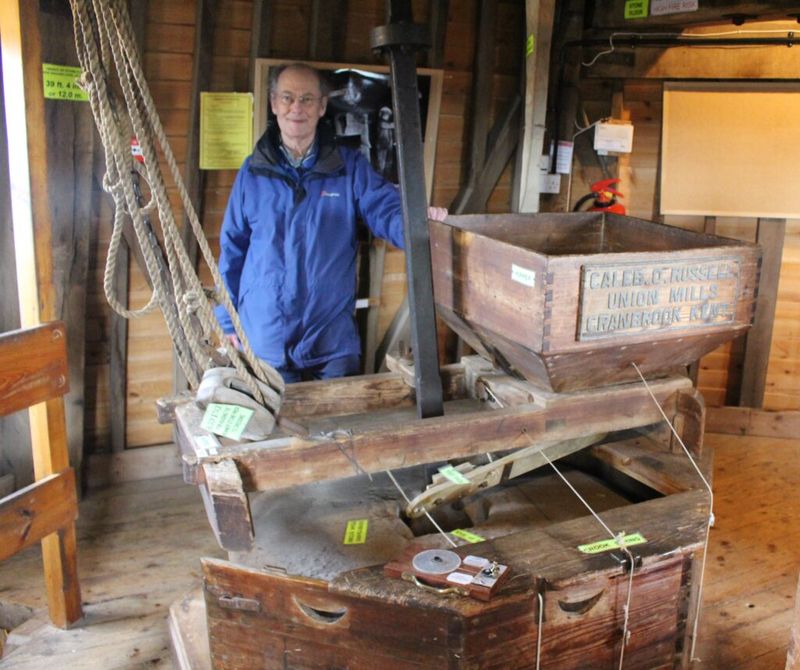
David Hall, a volunteer miller, beside a set of “Derbyshire Peak” millstones.
Last year the mill was wrapped in scaffolding while essential weatherproofing repairs were carried out by local contractors Redec Ltd. Using the skills of the early millers, local volunteers will soon be able to grind flour once again, using only the power of the wind.

“Cranbrook Mill is a beautiful building and an important part of Kent’s heritage. I’d like to congratulate all those involved in the renovations through a very challenging period. It’s an excellent example of volunteers and professionals working together.”
KCC Cabinet Member for Environment, Susan Carey said:
"Cranbrook Mill is a beautiful building and an important part of Kent’s heritage. I’d like to congratulate all those involved in the renovations through a very challenging period. It’s an excellent example of volunteers and professionals working together."
Cranbrook and Sissinghurst Parish Council chairman Kim Fletcher said:
"Residents will be delighted to have our windmill back in full sail. Even while it was naked, it has been floodlit as a Christmas tree and with the Ukrainian flag, but to have it back as one of the iconic sights of our town is great news."
"We urge visitors to come to see the mill in all its glory, along with our 13th century church, which is known as our Cathedral in the Weald, and the museum that houses our collection of Cranbrook Colony paintings as well as local history."
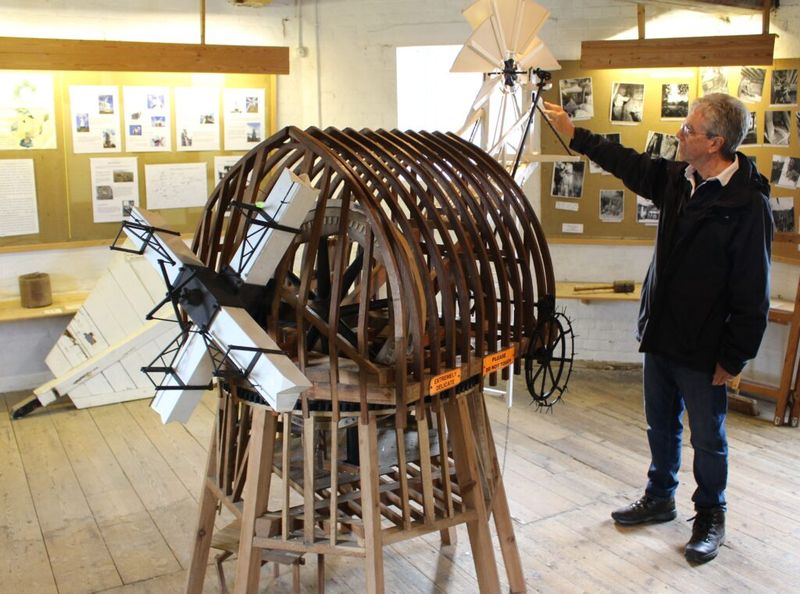
Volunteer Ian Burrows demonstrates the workings of the of the windmill Cap linking the force of the wind to the turning of the millstones using a 1/25th scale model.
Union Mill is open to visitors at weekends and on other days during the summer. See the Union Mill website for more details.
An official reopening ceremony is planned for Wednesday, 7 September.
ENDS.
